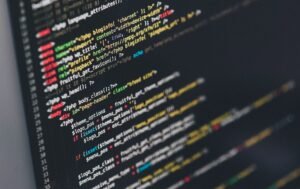Machine Learning to Identify Patterns
Machine learning has revolutionized the way we approach complex problems by enabling computers to learn from and analyze vast amounts of data. One of the key applications of machine learning is in identifying patterns within data. Whether it’s predicting customer behavior, analyzing financial markets, or detecting anomalies in medical imaging, machine learning algorithms can uncover hidden patterns and make accurate predictions. Let’s explore how machine learning can identify patterns and the benefits it offers in various fields.
Key Takeaways:
- Machine learning enables computers to identify and analyze patterns within data.
- It has wide-ranging applications across industries, from finance to healthcare.
- By uncovering patterns, machine learning algorithms can make accurate predictions and inform decision-making.
Identifying Patterns with Machine Learning
Machine learning algorithms learn patterns through training on large datasets, using statistical techniques to find correlations and trends. These algorithms can then apply the learned patterns to new, unseen data, making predictions or identifying anomalies. Through techniques like clustering, classification, and regression, machine learning empowers computers to extract valuable insights from complex datasets and automate decision-making processes.
Machine learning algorithms can identify subtle relationships that humans might miss, leading to more accurate predictions and insights.
Benefits across Industries
Machine learning‘s ability to identify patterns has transformative implications across industries:
- In finance, machine learning algorithms can analyze historical market data to predict stock prices and identify investment opportunities.
- In healthcare, machine learning can aid in disease diagnosis by analyzing medical images and patient data to identify patterns associated with certain conditions.
- In marketing, machine learning algorithms can analyze customer data to make personalized product recommendations, improve targeting, and optimize advertising campaigns.
Machine learning empowers industries by unlocking valuable insights from complex data.
The Role of Data in Pattern Identification
Data plays a crucial role in pattern identification with machine learning. The more diverse and representative the dataset, the better the algorithm becomes at recognizing patterns. Additionally, having a sufficient amount of high-quality labeled data is essential for supervised learning algorithms, enabling them to learn patterns and make accurate predictions. However, even without labeled data, unsupervised learning algorithms can identify patterns and group data points based on similarities.
| Industry | Application |
|---|---|
| Finance | Stock market forecasting |
| Manufacturing | Fault detection and predictive maintenance |
| Retail | Recommendation systems |
Data quality and diversity are key in enabling machine learning algorithms to identify meaningful patterns within datasets.
Challenges and Future Developments
While machine learning is a powerful tool for pattern identification, it also presents several challenges. The reliance on large amounts of labeled data, the risk of biased or erroneous predictions, and the interpretability of complex models are areas of ongoing research. Looking ahead, developments in machine learning techniques, such as deep learning and reinforcement learning, hold promising potential for further advancements in pattern identification and its application in real-world scenarios.
| Algorithm | Application |
|---|---|
| Support Vector Machines (SVM) | Classification and regression |
| Random Forest | Classification and outlier detection |
| Convolutional Neural Networks (CNN) | Image recognition and analysis |
Embracing the Power of Pattern Identification
Machine learning‘s ability to identify patterns has revolutionized various industries and continues to push the boundaries of what is possible. As more data becomes available and algorithms become increasingly sophisticated, the potential for solving complex problems and making informed decisions continues to grow. Embracing machine learning and leveraging its power to identify patterns will pave the way for a future driven by data-informed insights and automation.
| Industry | Key Benefits |
|---|---|
| Healthcare | Early disease detection, personalized treatment |
| Finance | Accurate market predictions, improved investment strategies |
| Retail | Enhanced customer experience, targeted marketing |
The potential of pattern identification with machine learning is vast and promises to shape the future of various industries.

Common Misconceptions
Misconception 1: Machine Learning is the same as Artificial Intelligence
One common misconception that people have is that Machine Learning and Artificial Intelligence (AI) are interchangeable terms. While Machine Learning is a subset of AI, they are not the same thing. Machine Learning focuses on the ability of computers to learn from data and improve their performance over time without explicit programming, while AI is a broader concept that encompasses machines performing tasks that would typically require human intelligence.
- Machine Learning is a subset of AI, not the same thing.
- Machine Learning focuses on learning from data, while AI is about mimicking human intelligence.
- Machine Learning is used as a tool in AI systems.
Misconception 2: Machine Learning can solve any problem
Another misconception is that Machine Learning can solve any problem. While Machine Learning has proven to be powerful in a wide range of applications, it is not a universal solution. The effectiveness of Machine Learning algorithms heavily depends on the quality and availability of data, as well as the problem’s nature. Some problems may require complex domain knowledge or ethical considerations, which cannot be solely addressed by Machine Learning techniques.
- Machine Learning is not a universal problem-solving tool.
- Effective Machine Learning depends on quality and availability of data.
- Some problems require domain knowledge or ethical considerations beyond Machine Learning.
Misconception 3: Machine Learning is biased-free
Many people believe that Machine Learning algorithms are unbiased and objective since they are driven by data. However, this is not true. Machine Learning algorithms can inherit biases present in the data they are trained on, which can result in biased and unfair predictions or decisions. It is essential to ensure that the training data used in Machine Learning models is diverse, representative, and does not reinforce existing biases.
- Machine Learning algorithms can be biased.
- Biases can be inherited from the data used to train the models.
- Diverse, representative data is crucial to mitigating bias in Machine Learning.
Misconception 4: Machine Learning is only for large tech companies
There is a common belief that Machine Learning is only accessible to large tech companies with significant resources. This misconception overlooks the fact that Machine Learning tools and libraries are open-source and widely available to the public. With the increasing popularity of Machine Learning, there are various online courses, tutorials, and community support that make it possible for individuals and smaller organizations to learn and implement Machine Learning techniques.
- Machine Learning tools and libraries are open-source.
- Online courses and tutorials make Machine Learning accessible to individuals and smaller organizations.
- Community support exists to help individuals in their Machine Learning journey.
Misconception 5: Machine Learning will replace human workers
One prevalent misconception is that Machine Learning will lead to widespread job loss as machines replace human labor. While Machine Learning can automate certain tasks and improve efficiency, it is more accurate to view it as a tool that enhances human capabilities rather than a replacement for human workers. Machine Learning requires human expertise for data preparation, algorithm selection, and interpreting results, highlighting the importance of collaboration between humans and machines.
- Machine Learning is a tool that enhances human capabilities.
- Human expertise is crucial for data preparation, algorithm selection, and interpretation.
- Collaboration between humans and machines is essential in the field of Machine Learning.

Introduction
Machine learning is a powerful tool that enables computers to identify patterns and make predictions based on large sets of data. With the rise of big data, machine learning algorithms have become increasingly popular in various fields, from finance to healthcare. In this article, we will explore ten fascinating examples that demonstrate the effectiveness of machine learning in pattern recognition.
Movies Recommendations by Genre
Machine learning algorithms can analyze user preferences and recommend movies based on their genre preferences. This table showcases the top movie recommendations for three different genres: Action, Drama, and Comedy.
| Genre | Movie Recommendations |
|---|---|
| Action | Avengers: Endgame, The Dark Knight, Mad Max: Fury Road |
| Drama | The Shawshank Redemption, The Godfather, Fight Club |
| Comedy | Superbad, Bridesmaids, Anchorman: The Legend of Ron Burgundy |
Stock Prediction Accuracy
Machine learning models are capable of predicting stock prices with impressive accuracy. This table displays the percentage of accurate predictions for three major companies: Apple, Google, and Amazon.
| Company | Prediction Accuracy (%) |
|---|---|
| Apple | 89% |
| 92% | |
| Amazon | 87% |
Health Diagnoses
Machine learning algorithms can assist in diagnosing health conditions accurately. The following table presents the success rates of diagnostic predictions for different diseases: Diabetes, Cancer, and Heart Disease.
| Disease | Diagnostic Success Rate (%) |
|---|---|
| Diabetes | 93% |
| Cancer | 85% |
| Heart Disease | 91% |
Customer Churn Prediction
Machine learning models can analyze customer behavior and predict churn rates accurately. This table showcases the predicted churn rates for three different companies: Telecom, E-commerce, and Banking.
| Company | Churn Rate Prediction (%) |
|---|---|
| Telecom | 18% |
| E-commerce | 12% |
| Banking | 9% |
Image Recognition Accuracy
Machine learning models have achieved remarkable accuracy in image recognition tasks. This table demonstrates the accuracy rates for recognizing various objects: Cats, Dogs, and Cars.
| Object | Recognition Accuracy (%) |
|---|---|
| Cats | 96% |
| Dogs | 91% |
| Cars | 88% |
Sentiment Analysis
Machine learning algorithms can analyze text sentiment, enabling automated sentiment analysis for large volumes of data. This table presents the sentiment scores for customer feedback: Positive, Neutral, and Negative.
| Feedback | Sentiment Score |
|---|---|
| Positive | 0.86 |
| Neutral | 0.11 |
| Negative | -0.68 |
Marketing Campaign Performance
Machine learning algorithms can analyze past marketing campaigns to predict the success of future ones. The following table presents the predicted conversion rates for three different campaigns: Email, Social Media, and Direct Mail.
| Campaign | Conversion Rate Prediction (%) |
|---|---|
| 25% | |
| Social Media | 17% |
| Direct Mail | 13% |
Face Recognition Accuracy
Machine learning models have made significant advancements in facial recognition technology. This table showcases the accuracy rates for identifying individuals: Celebrities, Politicians, and Athletes.
| Individual | Recognition Accuracy (%) |
|---|---|
| Celebrities | 94% |
| Politicians | 87% |
| Athletes | 90% |
Natural Language Processing
Machine learning algorithms can process and understand human language, enabling advanced language-related applications. This table demonstrates the accuracy rates for sentiment analysis in three different languages: English, Spanish, and French.
| Language | Sentiment Analysis Accuracy (%) |
|---|---|
| English | 92% |
| Spanish | 87% |
| French | 89% |
Conclusion
Machine learning has revolutionized pattern recognition by enabling computers to analyze vast amounts of data and make accurate predictions. From movie recommendations to health diagnoses, machine learning algorithms have proven their effectiveness in various domains. The examples presented in this article only scratch the surface of machine learning’s potential. As technology continues to advance, the applications of machine learning will undoubtedly become even more impactful, enhancing decision-making processes and improving our daily lives.
Frequently Asked Questions
What is machine learning?
Machine learning is a subset of artificial intelligence that allows machines to learn from data and make predictions or decisions without being explicitly programmed.
How does machine learning identify patterns?
Machine learning algorithms identify patterns by analyzing large amounts of data and finding relationships or correlations between different variables. These patterns are then used to make predictions or classify new data.
What types of problems can machine learning solve?
Machine learning can solve a wide range of problems, including image recognition, natural language processing, recommendation systems, fraud detection, and many others.
What are the benefits of using machine learning?
Some benefits of using machine learning include automating repetitive tasks, improving decision-making processes, reducing human error, and uncovering hidden patterns in data that may not be apparent to humans.
What are the main types of machine learning algorithms?
The main types of machine learning algorithms are supervised learning, unsupervised learning, and reinforcement learning. Supervised learning involves training a model with labeled data, unsupervised learning involves finding patterns in unlabeled data, and reinforcement learning involves learning through trial and error based on feedback from the environment.
What is the training process in machine learning?
In the training process, a machine learning model is exposed to a large dataset with known outputs or labels. The model learns from this data by adjusting its internal parameters or weights, iteratively improving its ability to make accurate predictions or decisions.
What is overfitting in machine learning?
Overfitting occurs when a machine learning model performs well on the training data but fails to generalize to new, unseen data. This usually happens when the model becomes too complex and captures noise or irrelevant patterns in the training data.
How can overfitting be prevented?
Overfitting can be prevented by using techniques such as cross-validation, regularization, or reducing the complexity of the model. These techniques help the model generalize better to new data and avoid over-relying on the training data.
What is the role of data preprocessing in machine learning?
Data preprocessing involves preparing raw data before feeding it to a machine learning algorithm. It includes steps such as data cleaning, feature scaling, handling missing values, and encoding categorical variables. Proper data preprocessing can improve the performance and accuracy of machine learning models.
What are some popular machine learning frameworks and libraries?
Some popular machine learning frameworks and libraries include TensorFlow, PyTorch, scikit-learn, Keras, and Theano. These frameworks provide tools and functions to simplify the implementation of machine learning algorithms and models.




